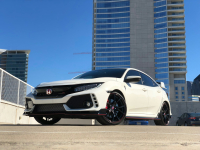In the blink of an eye, the Fed is part between plan leading body of trustees people who need to keep monetary methodology free and rates low - the flying creatures - and the people who need to start climbing credit costs - the hawks.
Heading into Q3 benefit season the case for a development in the fed saves rate continues mounting. The U.S. economy remains solid and development continues ticking higher - however steadily. At the September meeting, the Fed left financing costs unaltered, a decision that saw three people (hawks) deviate, believing the time was perfect for a development. Since the meeting, the U.S. business report for September showed the economy included 156,000 occupations and swelling for September rose at the speediest pace in five months. These factors have incited to destinies evaluating in a 65% shot of a move in December. (For extra, see: How Interest Rates Affect the Stock Market.)
The Hawks
In the meantime, vitality has been grabbing for a rate move to happen sooner than later from the flying creatures of prey. While Federal Reserve Chairwoman Janet Yellen had in advance been reluctant, she starting late communicated that, "in light of the continued with solid execution of the work showcase and our perspective for financial development and swelling, I believe the case for an extension in the administration stores rate has fortified starting late."
As demonstrated by Bloomberg, she is not alone. 'San Francisco Federal Reserve President John Williams said in August, "as to a strong family unit economy with incredible vitality, it looks good to come back to a pace of moderate rate increases, in a perfect world inside the not so distant future." And, Richmond Federal Reserve President Jeffrey Lacker said on Sept. 2, "In like manner, despite considering our appraisals of the potential lessening in the typical honest to goodness advance charge, it gives the advantages rate should be on a very basic level higher than it is instantly." Similarly, Cleveland Federal Reserve President Loretta Mester said," Policy must be forward-looking... In case you have a guess and swelling is moving to your target and you're at full business, then it seems like an unfaltering augmentation from a low credit charge is truly persuading to me. Pre-emptiveness is basic." Even Boston Federal Reserve President Eric Rosengren, who had as of now been seen as a fowl, starting late moved his tone saying there was a "sensible plausibility" the Fed would acquire rates up December.
One prominent dispute among the Hawks is that given that unemployment is at present ardently underneath 5%, wages may start to manufacture, which is most likely going to achieve swelling all through the economy. If the Fed fails to act preemptively, extension may overshoot the Fed's 2% target and make them scramble to climb rates in a session of compensate for lost time - and with negative effect. Clearly, the flying creatures counter this by saying that raising rates too soon can achieve the very swelling they are endeavoring to monitor.
The Doves
The pigeons are likely going to win at the November Fed meeting with just a 7% probability of a climb evaluated in. In any case, the December meeting seems like it will be a substitute story. A pigeon, in reference to cash related course of action, is one who favors expansionary system gadgets, for instance, low advance expenses and the use of techniques, for instance, QE, or quantitative encouraging, with the conviction that these will prod work and monetary improvement. By cutting down the cost to get, individuals and associations alike are given an inspiring power to spend and contribute. Data supporting this decision to keep up low rates is that GDP advancement has been lower than figure, and swelling has been pleasant. Besides, overall monetary deficiency remains a certifiable danger for the U.S. economy, appeared by the more grounded dollar, cutting down the prerequisite for preemptive rate climbs. (See moreover: How Much Influence Does the Fed Have?)
The pigeons starting now consolidate Federal Reserve Governor Daniel Tarullo, who starting late said, "we're not running a hot economy" and saying he needs to see "more significant affirmation of development" before he'd vote for a rate climb. Related Governor Lael Brainard agrees with this supposition and support it by demonstrating out that the Phillips Curve - the strain among business and swelling - is tolerably level. Yellen had similarly been extremely speculative starting in the relatively recent past - determining that such mechanical assemblies as negative credit expenses would not be off the table if another fiscal crisis hit. (For extra, see: What are the destinations of a "pigeon" Federal Reserve head?)
The Bottom Line
The common contention inside the Fed on paying little respect to whether to raise target advance expenses sooner than later is warming up. As the U.S. economy continues implying at quality and unemployment remains low, some fear that these low rates will fuel pointless risk taking and over-getting given a dishonestly insignificant exertion of money, inciting to extension, and realizing more fiendishness than incredible to the economy.
Thusly, the national bank ought to climb financing costs now to proper an overshooting of extension. The pigeons, regardless, contradict this thought. They assume that rates should remain low for a drawn out time span so far, refering to simply inconspicuous GDP improvement and some slack in the work promote as demonstrate by the Phillips Curve. They moreover are still watchful about overall political and fiscal risks, for instance, Brexit, the Italian sparing cash crisis, stagnation in the Eurozone, defenselessness in China and uncontrolled development in parts of South America. These perils could without quite a bit of an extend flood to the U.S. economy and a rate climb would simply heighten the potential harmful effects. While credit charges are more then likely not going to be raised in November, the December meeting is by all accounts a substitute story.






